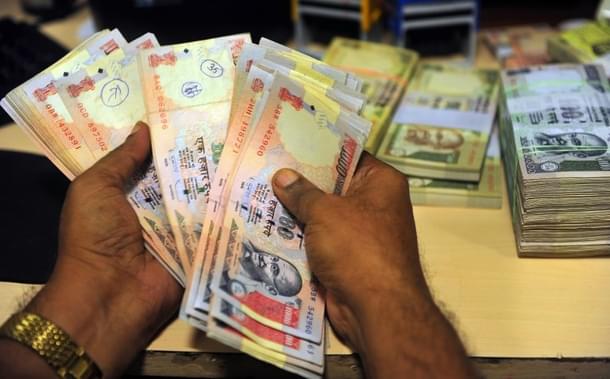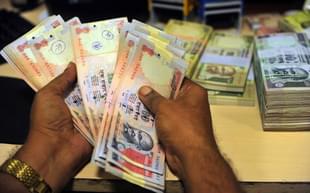Economy
Joining The Dots On Dirty Money And How India Can Become Clean
Sanjeev Ahluwalia
Apr 12, 2016, 12:10 PM | Updated 12:10 PM IST
Save & read from anywhere!
Bookmark stories for easy access on any device or the Swarajya app.


Which of us does not enjoy pulling down the high and mighty? And the
thrill is even sharper if these are people who may have breached laws
whilst rising to dizzy heights. And so it was with the recent Panama
Papers leaks which open a window into the morbid financial gymnastics of
the amoral, global elite. There are Indians in the list.
Let us see how badly is India affected by the tax evasion/avoidance driven flow of money overseas?
Global
Financial Integrity (GFI) – a United States-based entity, which tracks
and campaigns against black money - ranks India fourth out of 149
developing countries, after China, Russia and Mexico, on the basis of
the volume of illicit outflows. But this metric is fuzzy. It relates
outflows to the size of individual economies and consequently fails to
reflect the severity of the problem in each country.
Conflating
the GFI data on illicit flows with the World Bank data on GDP at current
market prices results in a more useful metric. The average annual
illicit outflows as a proportion of GDP for India, according to this
metric, was 2.7 per cent over the period 2004 to 2013. Within the BRICS
countries cluster, South Africa was at a whopping 23 per cent, followed
by Russia at 5.6 per cent. Brazil was the lowest at 0.9 per cent, with
China the second lowest at 1.8 per cent.
Out of the other large
developing economies, illicit outflows out of Malaysia stood at a
worrisome 14.1 per cent of GDP, Thailand at 5 per cent, Mexico at 4.5
per cent, Nigeria at 4.1 per cent and Indonesia at 2.1 per cent. In
South Asia, Bangladesh is the leader with illicit outflows at 4.2 per
cent of GDP, followed by Nepal at 3.1 per cent and Pakistan at a low 0.1
per cent.
Dirty money links
So, how do illicit
outflows, tax evasion, corruption and crime link up? Simply put illicit
flows legitimize the proceeds of any of these activities. In the hawala
transfer route, an individual or entity, resident in India, desiring to
transfer dirty money overseas, makes a payment in cash in India to a
hawala agent whilst a designated counter-party overseas gets paid in
foreign exchange.
The source of the cash in India could be from
income on which tax has not been paid or the proceeds of crime,
including corruption. The foreign exchange overseas could be similarly
sourced from corruption, crime or from Indians remitting money home
(remittance of invisibles, including by overseas Indians of their
earnings, was around $223 billion in 2013). Remittances through hawala
get a better exchange rate than those via bank transfers. Foreign
exchange overseas could also be the proceeds from under-invoicing Indian
exports with part payment being made by the foreign importer to an
overseas account related to the exporter.
Such illegal caches of
foreign exchange overseas can be legitimated by bringing them back to
India by over-invoicing Indian exports. Such funds can also be masked as
foreign portfolio investments from foreign jurisdictions where
obscuring the ownership of funds is a fine art, as in Panama. GFI
estimates that under and over invoicing of trade flows accounts for 83
per cent of global illicit outflows. Usually a combination of several
illicit transfer mechanisms may be used to obscure and mask the
direction and ownership of the net flows.
The drivers of dirty money
Crime,
corruption and the ability to avoid tax are all the outcome of poor
governance aided by low levels of financial intermediation and
digitization in the economy. Identifying the real ownership of bank
transactions using biometric tracers, reducing cash transactions,
embedded red flags and alerts which identify and monitor irrational
transactions and sniff out a mismatch between income and consumption or
income and savings, are standard tools for clamping down on the extent
of black money. But we have started down this path only very recently.
Till
the 1990s, when India had a chronically precarious balance of payments,
the loss of foreign exchange through illicit transfers was a major
concern. Today with foreign reserves at around one year of imports this
is less so. But the loss of potential tax revenue hits us hard. Assume
the value of tax lost on illicit outflows of $83 billion at a
conservative 30 per cent or $24 billion per year. This equals around
one-fourth of the average fiscal deficit during the period 2010 to 2013.
Lost
tax is just one of the problems associated with dirty money. Other
downsides are less tangible. Strong political and business interests get
entrenched which obstruct enhanced transparency, the reduction of
discretionary administrative powers and systematically subvert the
formal governance systems and the informal norms which bind society.
Where
this happens over a period of time, societal norms shift towards a new
normal which actively subverts the rule of law. Prolonged conflict
creates a similar loss of cultural and social capital. Government loses
credibility as the provider of security and the arbiter of equity and
fairness. Citizens look to informal structures like caste, clan or even
professional alliances for social support.
Triangulating the evidence
Can
we substantiate this link between poor governance and enhanced illicit
outflows? The World Bank’s Worldwide Governance Indicators (WGI) provide
a ready index which maps six drivers of good governance across multiple
data sources. For our purposes we look at two of these - Rule of Law
and Control of Corruption. A close and negative correspondence between
illicit outflows and the country WGI score can validate both the WGI and
the GFI methodologies. High illicit outflows should correspond with a
low WGI score.
The WGI ranks Brazil, Malaysia, South Africa and
Thailand high on both upholding the rule of law and exercising control
of corruption. India edges in only into the Rule of Law category in this
ranking. But good performance in the WGI has not helped Malaysia, South
Africa and Thailand curb illicit flows which are high, relative to GDP.
In comparison, China and India with lower ratings in the WGI have far
lower illicit outflows relative to GDP.
Similarly, Pakistan and
Indonesia have minimal illicit outflows relative to GDP but score very
low in the WGI index. This conundrum illustrates the need to further
refine both the GFI and WGI assessments in the context of tangible
results and outcomes of good governance.
The trend going forward
GFI
estimates that the aggregate outflow of illicit money for the set of
149 countries grew at 6.5 per cent per annum during the period 2004-2013
- more than double the rate of economic growth. This is worrisome
because it illustrates a looser than desirable link between growth and
tax revenues. If economic growth is leaky and does not boost tax
revenues in developing countries, achieving social protection and human
development targets can be severely compromised. Is India sliding down
this slippery slope?
In India, illicit outflows more than doubled
overnight from $29 billion in 2009 to $70 billion in 2010. During the
period 2010 to 2013 - the latest year for which data is available - it
averaged $83 billion per year or around 4 per cent of GDP. This period
coincides with the second term of the United Progressive Alliance
government, which was marked by serial scams in telecom and coal. But
whilst it is tempting to deduce a causal relationship between the two,
this is difficult to substantiate.
What we do know is that we
need better tools to monitor, in real decision time, the origin,
magnitude and direction of illicit outflows, which are a vital red flag
for poor governance. Achieving this is closely linked to
professionalizing the government and rapidly digitizing the economy and
government processes. We are doing far more on the latter, than on the
former. This could be a costly and careless error. Till advanced
robotics and artificial intelligence kick in sometime around 2030, the
effectiveness of government servants will continue to matter.
Sanjeev Ahluwalia is Advisor, Observer Research Foundation. He specializes in economic governance and institutional development.





